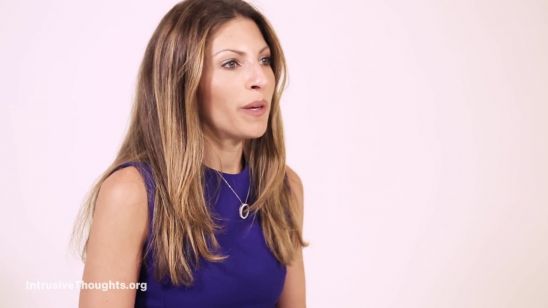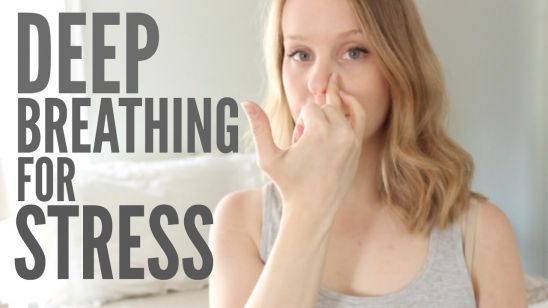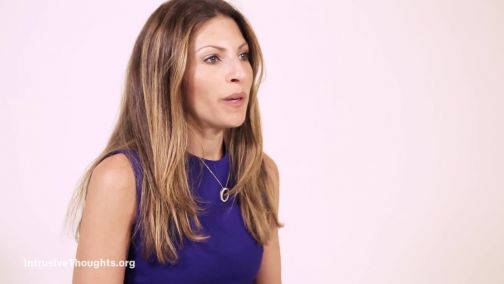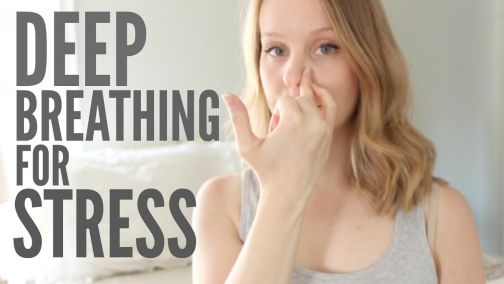Obsessive-Compulsive Disorder
Also known as OCD
What is it?
We’ve all had intrusive thoughts — upsetting ideas or images that pop into our mind for no reason. Like the thought of steering your car into oncoming traffic, or blurting something offensive out in the middle of a meeting. Most people are able to brush these thoughts off and forgot about them. But for some, they play on an endless loop, causing tremendous amounts of anxiety.
This is called obsessive compulsive disorder, or OCD. OCD is a condition that causes unwanted intrusive thoughts (obsessions) that a person tries to minimize by engaging in some form of mental or physical action (compulsions). These thoughts can be about anything — sex, religion, violence, health, the meaning of life. When left untreated, they run rampant and can be extremely debilitating for those experiencing them.
Compulsions are a person’s way of stopping these thoughts from spiraling. They can manifest as visible rituals, like hand-washing and counting, or invisible rituals like avoidance behaviors, mental ruminations or mental checking. People with invisible compulsions often refer to their version of the disorder as Pure OCD or Pure O.
The World Health Organization has OCD ranked as one of the top 20 causes of illness-related disability worldwide for people 15-44 years of age. It is estimated that 1 in 100 children have OCD. The condition affects people of all genders, ethnic groups and socioeconomic statuses, with women having a slightly higher prevalence rate than men.
What are the symptoms?
The two primary symptoms of OCD are obsessions and compulsions. Obsessions are disturbing, repetitive thoughts that flash across a person’s mind hundreds or thousands of times a day. These thoughts can be unwanted, scary, bizarre, gross and even funny. The nature of a person’s thoughts is often related to the things they care about most in life. For example, a religious person may experience intrusive thoughts about assaulting god.
Compulsions can also come in many different forms. Some people engage in physical compulsions to minimize their anxiety. Common examples include counting, tapping and excessive washing. These are often called “rituals.” But for others, compulsions are invisible. They happen inside their minds and can’t be picked up by others. CBT therapy refers to them as "internal verbal behaviors". For example, if someone has an obsession that they said something offensive during a conversation, they may replay that conversation in their head over and over again, or avoid interacting with that person the next time they see them.
Common Obsessions:
- Intrusive Thoughts
- Unwanted Thoughts
- Repetitive Thoughts
- Racing Thoughts
- Violent Thoughts
- Sexual Thoughts
- Blasphemous Thoughts
Common compulsions:
- Avoidance
- Reassurance Seeking
- Checking
- Hand Washing
- Excessive Prayer
- Counting
- Comparison Seeking
- Excessive Guilt
What are some common warning signs?
OCD is a complex disorder that affects every sufferer differently. Contrary to popular belief, it is not all about handwashing and organization. While there are similarities across cases, individual manifestations tend to mirror specific anxieties based on a person’s unique life experience. Because of this, OCD is often classified into different subtypes. These are not diagnoses. They are labels or categories for understanding the many forms OCD can take. Some sufferers only experience one theme, others experience multiple or have themes that change overtime.
What causes OCD?
Like most mental conditions, there is no one cause of OCD. It is often the byproduct of numerous, overlapping factors such as:
Genetics
Certain people are more likely to develop OCD and related conditions if they have a family history of them.
Brain circuits
Anxiety disorders have been linked to activity in an area of the brain called the Amygdala. The Amygdala is home to our Fight-or-Flight response. It’s thought that people on the anxiety disorder spectrum may have overactive or malfunctioning Amygdalas. You can learn more about that here. There may be other issues at play as well, such as misfiring stress hormones (like cortisol and adrenaline) or dysfunctional serotonin systems. These problems are all part of the Hypothalamic Pituitary Adrenal (HPA) Axis — a complex system of interactions that take place between the hypothalamus, pituitary gland and adrenal glands.
Past Trauma
Traumatic experiences are thought to impact the likelihood of developing anxiety disorders later in life. For example, someone who grew up in a turbulent home may be more anxious than someone who grew up in a supportive one.
Environmental
Being in high stress environments for extended periods of time can trigger anxiety disorders. In some cases, previous drug use may "unlock" OCD.
How is it treated?
There are two primary treatment methods for OCD — psychotherapy and medication. Healthy lifestyle habits can also help people cope. Maintaining a balanced diet, 8 hour sleep schedule, mindfulness regimen (like yoga, meditation or art therapy classes) and staying physically active, can ease the severity of symptoms. However, for many people with serious and prolonged OCD, these adjustments won’t be enough to fully address their disorder.
When it comes to therapy, a form of Cognitive Behavioral Therapy (CBT) called Exposure and response prevention (ERP) is considered the gold standard. ERP exposes people to the thoughts, images and objects that trigger their anxiety, and gives them the tools they need to stop engaging in compulsions.
In more severe cases, medication may be used alongside therapy to help minimize anxiety. The main family of medicines used to treat OCD are known as Selective Serotonin Reuptake Inhibitors, or SSRIs. SSRIs enhance your natural serotonin activity and are used to treat major depressive disorders and anxiety conditions. Well known examples include Lexapro, Prozac, Paxil, Zoloft and Luvox.
However, SSRIs aren’t the only kind of antidepressant. Alternative options like serotonin-norepinephrine reuptake inhibitors (SNRIs), atypical antidepressants, tricyclic antidepressants, and monoamine oxidase inhibitors (MAOIs) might be a better fit for certain people. In some cases, a doctor will prescribe mood stabilizers or antipsychotics in addition to an antidepressant.
Learn more about OCD treatment below.
How can I help a loved one with OCD?
It can be hard to know how to react when someone you love isn’t doing well. Do they want to talk about it, or would they prefer to keep their experiences private? Will you push them away by starting the conversation?
There are no easy answers to these questions. Every person handles their mental health differently. That said, we all want to feel loved and supported. Showing someone that you’re invested in their wellbeing can make a world of difference. Here are some ways to do so:
- Educate yourself: Read up on symptoms, treatment options, and healthy living recommendations. Try and understand what your loved one is going through so you are better equipped to talk to them about it. This will also make you a valuable resource when it comes time to find treatment.
- Encourage healthy living: Sleeping well, eating nutritional foods, staying active and limiting substance use can be game changers for someone with anxiety. If they’re surrounded by people who promote this kind of lifestyle, they’re more likely to form healthy habits of their own. Try joining a fitness class together, or cooking meals at home using healthy ingredients.
- Advocate treatment: Asking for help can be hard. Societal stigma often keeps people from opening up to others about their symptoms. Support your loved one by helping them research different treatment methods, or doctors in their area. If they’d like, go to a few sessions with them. Remind them that there’s nothing weird about getting help, and that you’re proud of them for following through.
- Listen: It’s common for people battling anxiety to feel alone. Make time for meaningful conversations. Ask them how they’re doing. Let them talk and make sure to not discount their emotions. It is not your job to fix them, just to be there.
- Don’t tell them to calm down: People with anxiety are often told to “get over it”, “worry less” or “chill out.” These statements downplay the emotions they’re feeling, and won’t help lessen their symptoms. Let them vent without judging.
- Set boundaries: You want to be understanding of their symptoms, but that doesn’t mean you have to put up with everything. Make rules for what you will and won’t tolerate, in particular, the kinds of compulsions you won’t give in to. Stick to these boundaries and follow through on consequences when they’re broken.
- Be patient: Don’t take it personally if they lash out at you, don’t answer text messages or socialize less. They are battling something that’s very hard to overcome. Their distance has nothing to do with who you are as a person. Keep showing up for them even when it feels like it’s not helping. The act alone lets them know that they have people in their life who care.
What other resources are out there?
Want to learn more, find a doctor, join a support group or speak to a counselor? The below resources might be able to help:
- International OCD Foundation
- NOCD
- Crisis Text Line
- BetterHelp
- Psychology Today Directory
- American Psychiatric Association
- Medicaid Eligibility Information
- Open Path Collective
- Resources for POC, LGBTQ+ and disabled individuals
- Anxiety and Depression Association of America
- National Network of Depression Centers
- Medicine Assistance Tool
- NeedyMeds
- Erika's Lighthouse
- Anxiety Network
- Anxiety Central Forums
- Social Anxiety Institute
RELATED TOPICS
Support our work
We’re on a mission to change how the world perceives mental health.

































































































